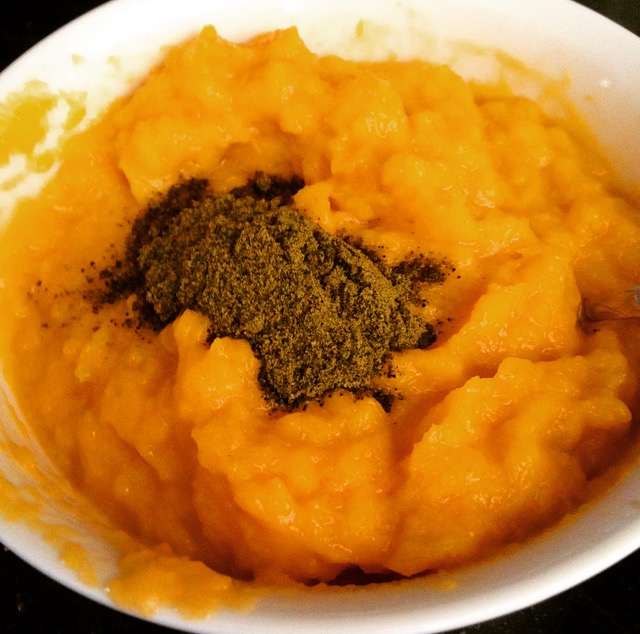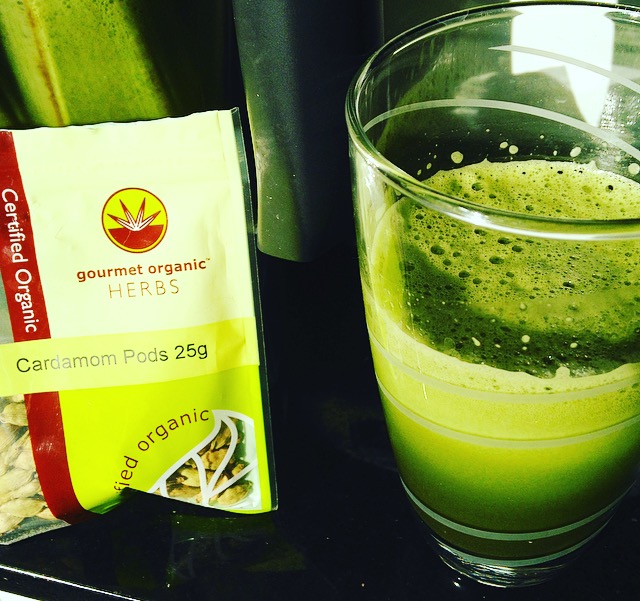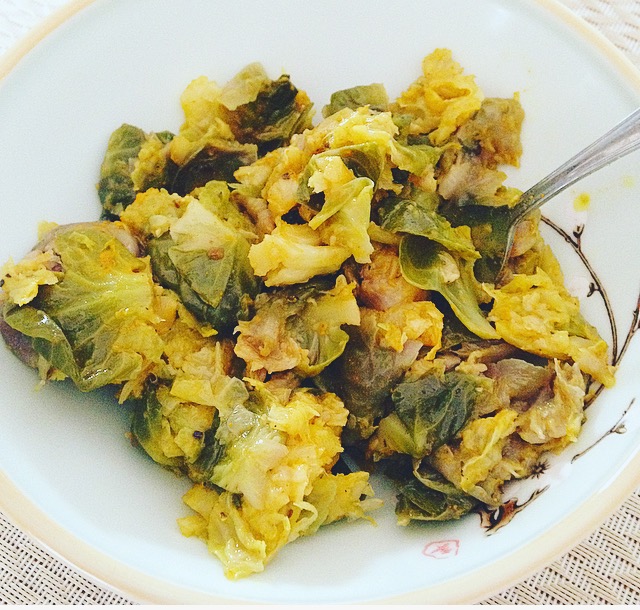Most of my recipes are, at least to some extent, “anti-inflammatory.”
All whole foods are anti-inflammatory in one way or another.
- Some are potent anti-inflammatories, containing compounds that actively reduce inflammation in the body, such as turmeric and it’s active compound curcumin
- Others, such as berries and sweet spuds, contain antioxidants which fight pro-inflammatory free-radical damage
- Then there are those that aren’t anti-inflammatory themselves, but are a great replacement for food-like substances that are.
An example of the latter is rapadura sugar. It’s groovy to enjoy ridgy-didge cake or pudding from time to time. Using rapadura on these occasions saves us from ingesting nutrient-devoid, chemical-riden white or castor sugar. This is akin to an insurance policy against inflammation. Like my old chiropractor Dr Brett Hill likes to say “sometimes it’s a matter of good, better, best”.
What is inflammation?
It’s a natural cascade occurring within the body in response to illness, infection or injury. In acute (sudden and short-lived) situations, inflammation is good news. The process puts the immune system on high alert, driving immune cells to scavenge damaged proteins and engulf unwanted bacteria. It increases blood flow to the site of concern, allowing more nutrients to be delivered to the area for healing purposes. It also causes redness, pain, heat and swelling. The ensuing discomfort let’s you know something’s up and virtually forces you to take a load off – whether you like it or not.
Acute inflammation is a normal, healthy process that aims to shift the body back into a state of balance.
It’s when inflammation persists and becomes chronic that we have ourselves a billy-bally-bother. It’s unnatural for the immune system to be hyper stimulated for long-periods of time. Just like wildfire, inflammation can spread rapidly. Of particular concern is gastrointestinal inflammation. If the gut is inflamed, the intestines can become porous and large molecules that don’t belong in the bloodstream can make their way into circulation.
From here, the immune system springs into action, trying to clear these foreign bodies from the blood. Sometimes, these cells are partially undigested proteins, or cells appearing very similar to those comprising our organs. This confuses the immune system, and the next time we eat, say, an almond, which we’ve previously digested with ease, it has a learned response to attack this food and all of a sudden we react poorly to a humble spoonful of almond butter.
Likewise, the body can turn to our livers or kidneys, or whatever tissue looked similar to the proteins that escaped the gut, and go “hmmm, this looks like that thing I dealt with yesterday, there’s a whole cluster of them. Better start working my way through these bad boys”. This is just one mechanism by which gastrointestinal inflammation can affect the body. It can also disrupt gut microbial balance, which has flow on affects to other body systems such as the nervous and endocrine systems. Gut bugs communicate with our brains, our immune cells and our hormones (or the organs that produce hormones), so if they’re out of whack, anything can happen.
Many things can cause inflammation in the body. Stress of any kind is a biggie, as is lack of sleep. Chemical exposure; to air pollutants, heavy metals and the array of funky ingredients in cleaning and personal care products. A sure-fire way to trigger inflammation is by wearing deodorants and perfumes (unless you source one that is essential-oil based and fragrance-free). Exercise causes inflammation too, but also has anti-inflammatory mechanisms (like my preferred “drug” of choice; endorphins) which, in a healthy body, cancels the effects of inflammation and elicits additional benefits. That’s why recovery after exercise is important – it allows your body the chance to repair and rebuild the tissue from the wear and tear of movement.
Then there’s food …
Every time we eat, we get to choose whether we light or extinguish a fire (a.k.a systemic inflammation).
Nutrients help us deal with daily stressors. I may be a yoga teacher but I’m also a student – when assignments are overwhelming, stress likes to find me. I avoid perfume like the plague, yet lack control over what my gym pals choose to douse themselves in before attending a Fit30 class. I try to get enough sleep, but sometimes my darling cats wake up early and knock on my bedroom door until I get up and let them outside to empty their urgent bowels (apparently kitty litter doesn’t cut it at 5:30am). My point? A wee bit of stress is an unavoidable part of life. The body can deal with these small disturbances … when we give it the right tools to do so.
Unfortunately, processed foods (including processed meats such as salami and bacon), non-organic wheat, generic ‘vegetable’ oils and margarines, anything genetically modified (canola, non-organic corn and soy, even some alfalfa plants), most forms of dairy, white sugar and alcohol – all of which are staples in common western diets, are pro-inflammatory. They lack adequate nutritional value, have mechanisms which damage the gut or accessory organs (such as alcohol and the liver) and can induce free-radical damage.
The good news? Fruits, veggies, cold-pressed oils (such as olive or macadamia), wheat-free whole-grains, legumes, herbs, spices, nuts, seeds, organic eggs, quality fish and organic, grass-fed meats are delicious and contain the nutrients we need to;
- maintain intestinal integrity
- support natural detoxification mechanisms (think POO!)
- nourish our trusty gut bugs
- optimise genetic expression
- neutralise free-radicals
- repair and re-build cells
- boost immunity
- balance hormones, and
- help us deal with both physical and psychological stress
And all of this will come together to make us stronger, happier and healthier (plus both stress- and pain-free to boot).
Below are some of my fave dishes to keep inflammatory processes under control (click on the titles to be redirected to the recipe). These creations taste incredible; as in shamelessly-making-sex-noises-when-you-eat-becuase-#foodgasm kinda enjoyable.
As much as I love using food as medicine, I voweled long ago to never again return to my dark days of chugging barley-grass shots in the name of good health. Medicinal foods have to do amazing things for my insides and taste good.
Probiotic Pumpkin Mash
Why? This baby is swimming with Beta-carotene, a potent antioxidant that will selflessly donate a spare electron to un unstable free-radical; ending said radical’s destructive quest for an electron pair. It’s also rich in dietary fibre – so your gut bugs are huge fans. The probiotic powder adds a savoury tang and complements the fibre; fuel for probiotic proliferation. Quality salt adds minerals and balances the meal’s potassium content. Finally, coconut cream contains caprylic acid – a known anti-microbial substance, that can support the immune system in preventing infection (but not potent enough to kill the probiotics off … how do I know this? If coconut cream could do this, then coconut yoghurt wouldn’t be a “thing”).
Green Smoothie Goodness
I love this groovy beverage. I add chilli, red capsicum, cinnamon, ginger, matcha, cardamom and probiotics to mine for added anti-inflammatory goodness (and a good kick of spice and digestive support). Spirulina is a potent source of antioxidants (and not too shabby on the protein front either). Raw cacao not only makes the drink rich and chocolatey, but is also rich in antioxidants. Spinach is full of fibre, B vitamins and iron. Coconut water is a great source of electrolytes to replenish the minerals we lose during natural detoxification processes; sweating, peeing, pooping, breathing.
Spunky Turmeric and Olive Oil Broccoli
Do you know what’s groovy about this bowl of powerhouse amazeballs-ness? It’s not bitter! When my Naturopath suggested I add turmeric to my meals for immune and gallbladder protection, my initial reaction was; ” oh crap! I know you’re right, but now I’m stuck in the quandary of being a nutrition student that knows better yet is tempted not to do better for the sake of enjoying her food”. Thankfully, like dark chocolate and chilli, turmeric grows on you, and a little goes a long way. Even just 1/4 a teaspoon provides benefit, and the black pepper helps activate the anti-inflammatory goodness of curcumin (heating helps too – which is why we add it straight to the cooked broccoli while it’s nice and hot). I eat this dish most days and it refuses to grow old – clearly my body loves it’s work. You can make a similar dish using cauliflower, kalettes or brussels sprouts (pictured) in place of broccoli.
Crunchy Salmon Amazingness
This is a fun meal. Essential Omega-3 fatty acids in the salmon (oily fish loves to help you fight inflammation). Antioxidants and fibre from the zucchini and sweet spud (get the pattern? Veggies = antioxidants and fibre). Kelp noodles are rich in iodine, important for thyroid health. The thyroid – responsible for metabolism, growth and temperature regulation, is effected by stress, so it’s a good organ to be thinking about before things go haywire. I love the different textures and flavours. Melt-in-the-mouth salmon, sweet, creamy veggies, crunchy noodles and the subtle flavour-kick from our spicy pals pepper, ginger and turmeric.
Oh-Hail Inca Inchi Seed Butter
This is a super-simple recipe; 2 packets of inca inchi seeds in the blender or food processor for a minute or so and voila – peanut butter replacement, and one of my absolute faves! So much so that I have to force myself to enjoy other nut and seed butters (for variety) because I’d happily eat this one exclusively for days.
Inca inchi seeds contain omega-3 fats, complete protein (every essential amino acid) and poo-pushing fibre. They taste like peanuts, so are a great PB replacement. What’s wrong with peanuts? Not much, so long as they’re organic and not coated in vegetable oil. Many peanuts are sprayed with pesticides (they’re susceptible to mould growth) and then roasted in pro-inflammatory oils. Many peanut butters contain hydrogenated vegetable oils, refined table salt and white sugar added for taste, texture and shelf-life.
Peanuts are a ripper source of monounsaturated fats (considered very heart-healthy indeed) so the quality ones are a yummy and nourishing addition to the diet. However, inca inchi reins supreme on the nutrient front, and (in my humble opinion) tastes even better. Whack inca inchi seed butter on baked sweet spud cubes, sliced narnie coins or porridge creations (pictured) and enjoy the health benefits that taste orgasmic!





